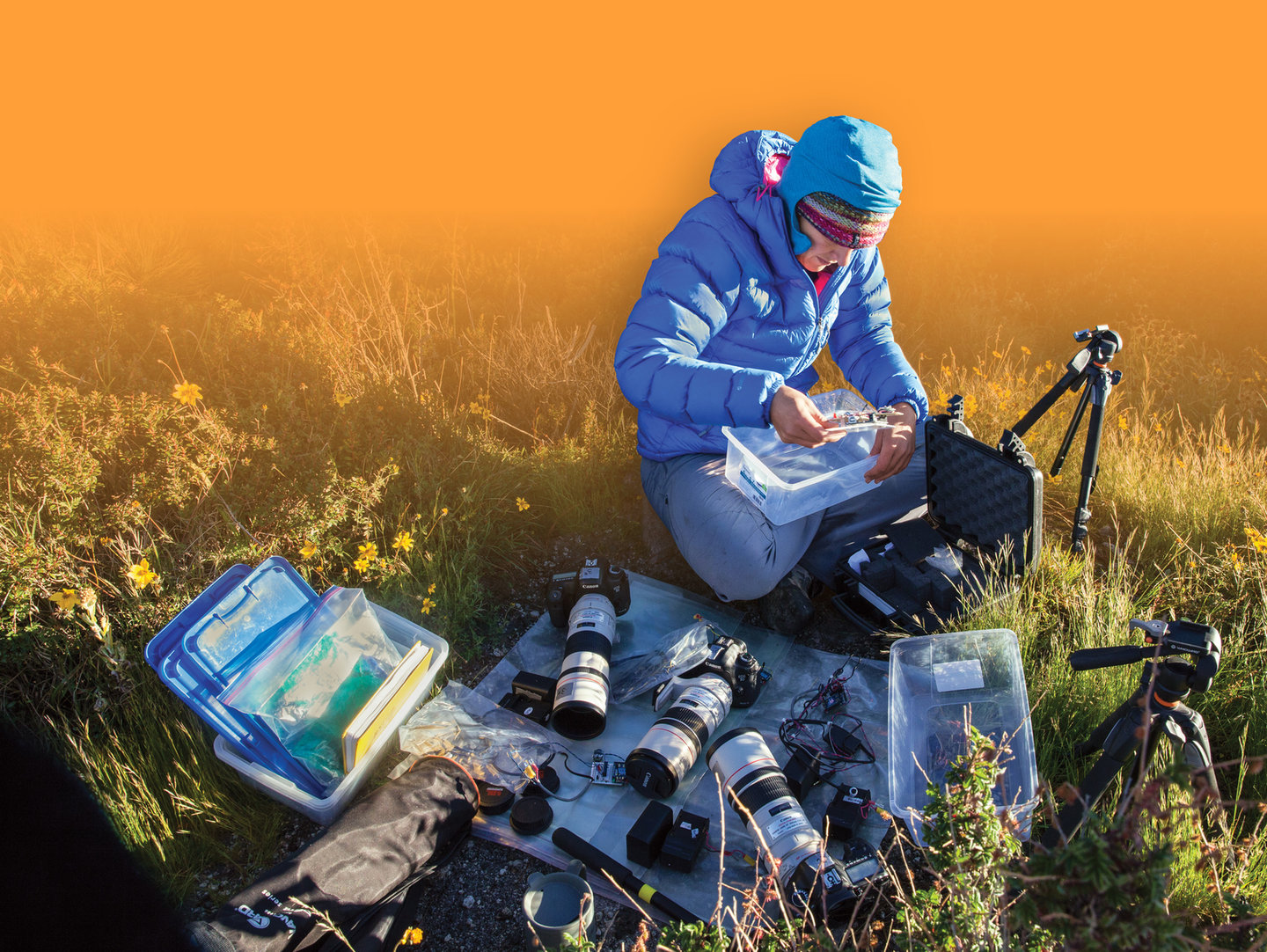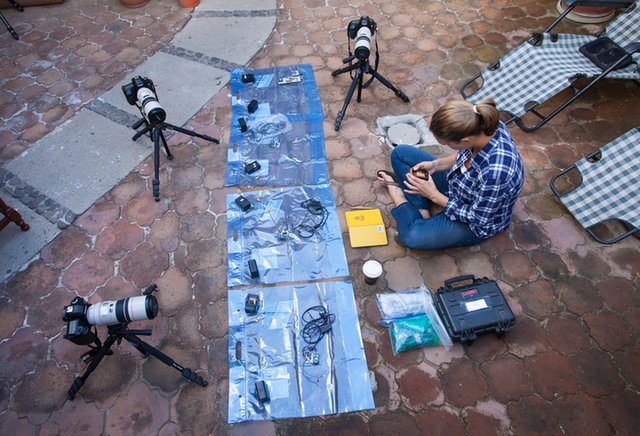IntheField
Onceinthefield,theteamgottowork.First,theysetuptheircameras.Theywantedtotaketime‑lapsephotosofthe vent.
Threecamerasweresetup.Theywereputinseparateplacesbutallaimedatthesamepoint.Thecameraswouldbestartedusingaremotecontrol.Thenphotoscouldbetakenatthesame time.
Theteamtooktestshotstomakesurethecameraswereworking.Then,theyweighedthemdownwithrockstoholdtheminplace.Everythingwasready now!
Grockeinspectsthecamerasandothergearbeforesettingthem up.

RoutineMaintenance
Duringtheday,thecameraswouldtakeonepictureeveryfiveseconds.Atnight,onepictureeveryminutewouldbetaken.Theteamwouldtakepicturesfor36 hours straight.

Thesethreecameraswillbeconnectedusingradiotransmittersandreceivers,sothattheycantakephotosofthelavadomeatthesametimefromthreedifferent places.
Batteriesinthecamerashadtobechangedeveryeighthours.Thiswashardtodoatnight.Theteamusedheadlampsandhikingpolestohelpthemreachthe cameras.
Grocketooknotesofherobservations.Salazartookthousandsofphotographs.AndDonihueusedadronetocollectdataandtakepicturesfromthe air.